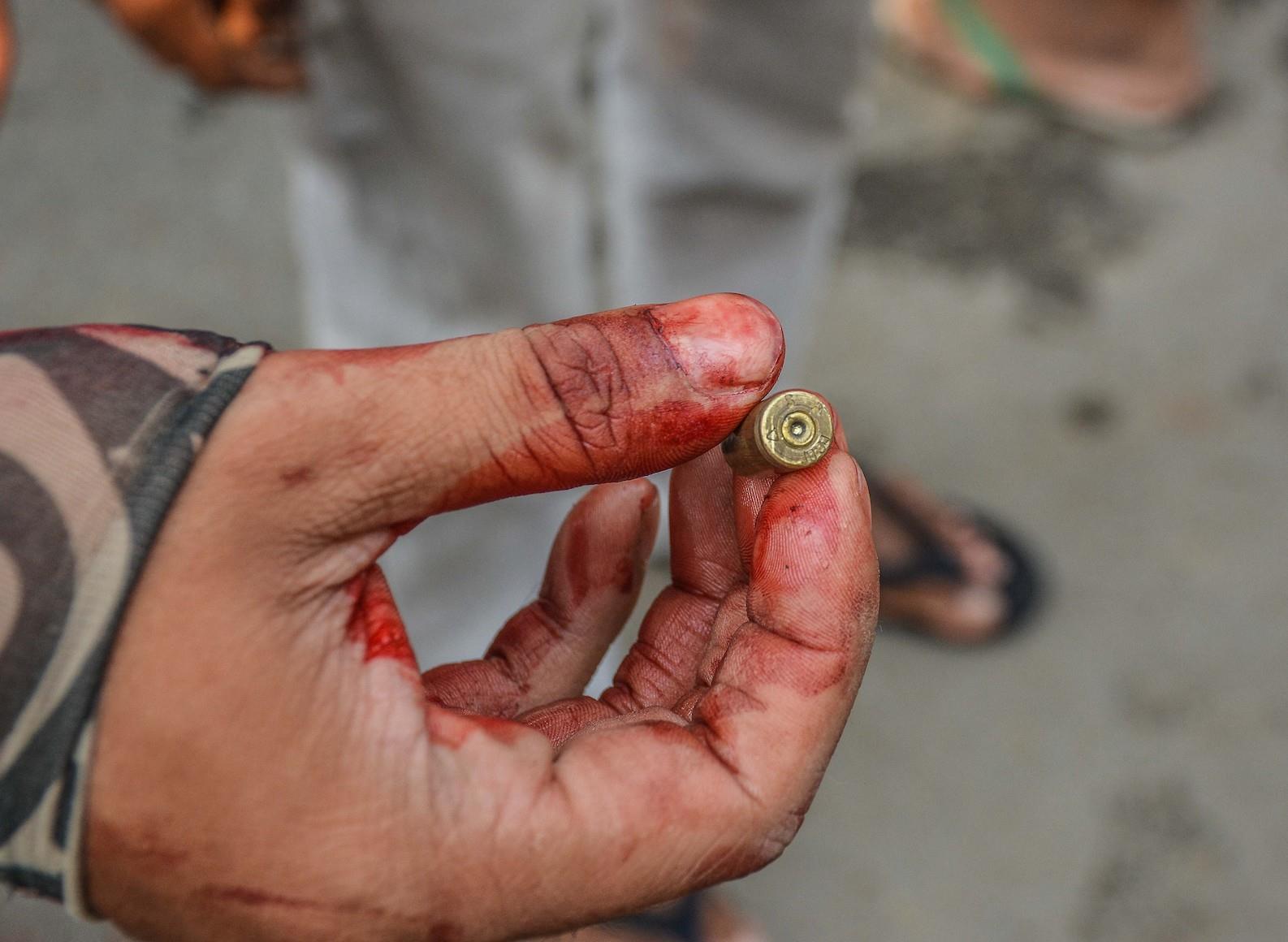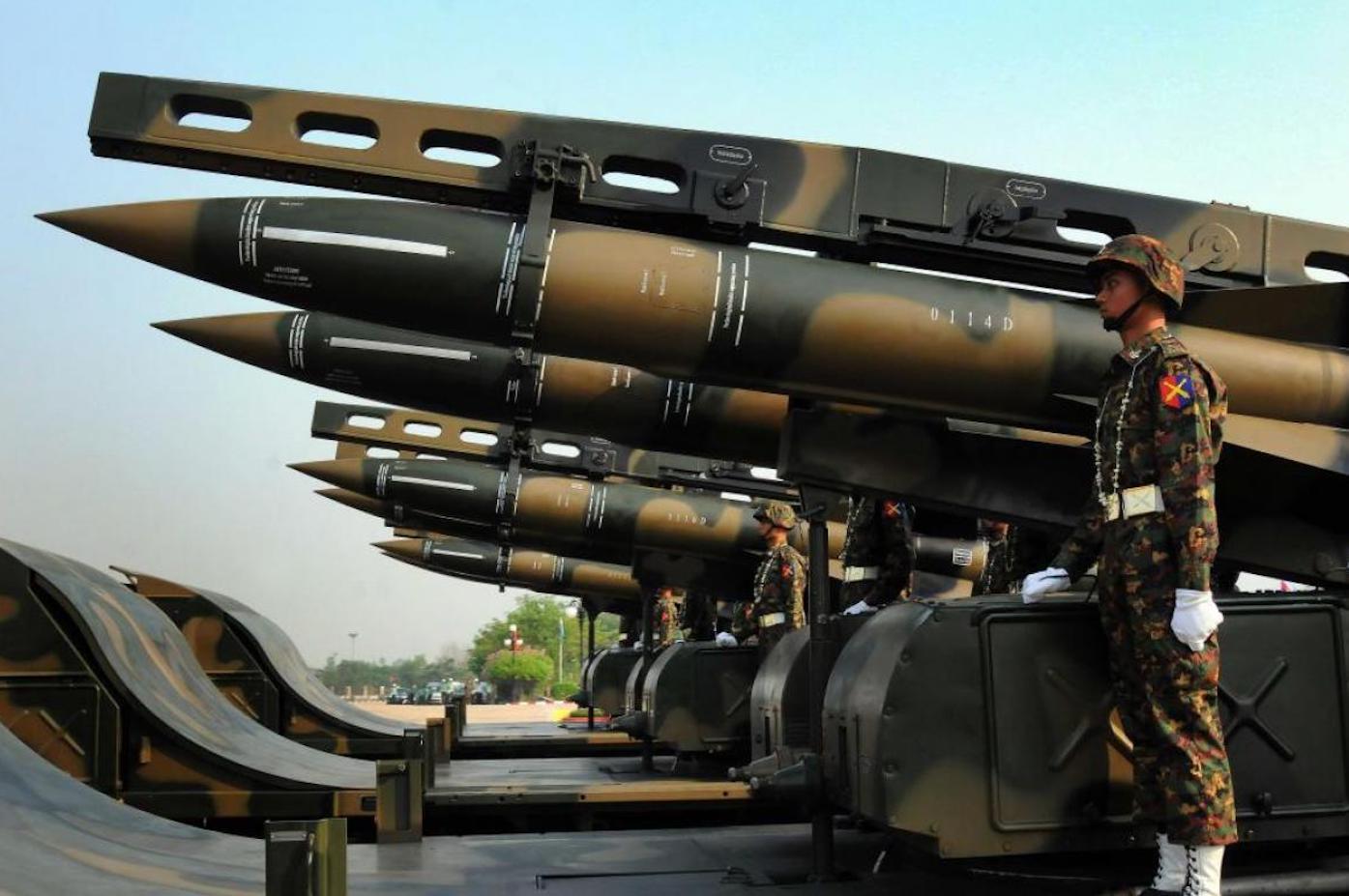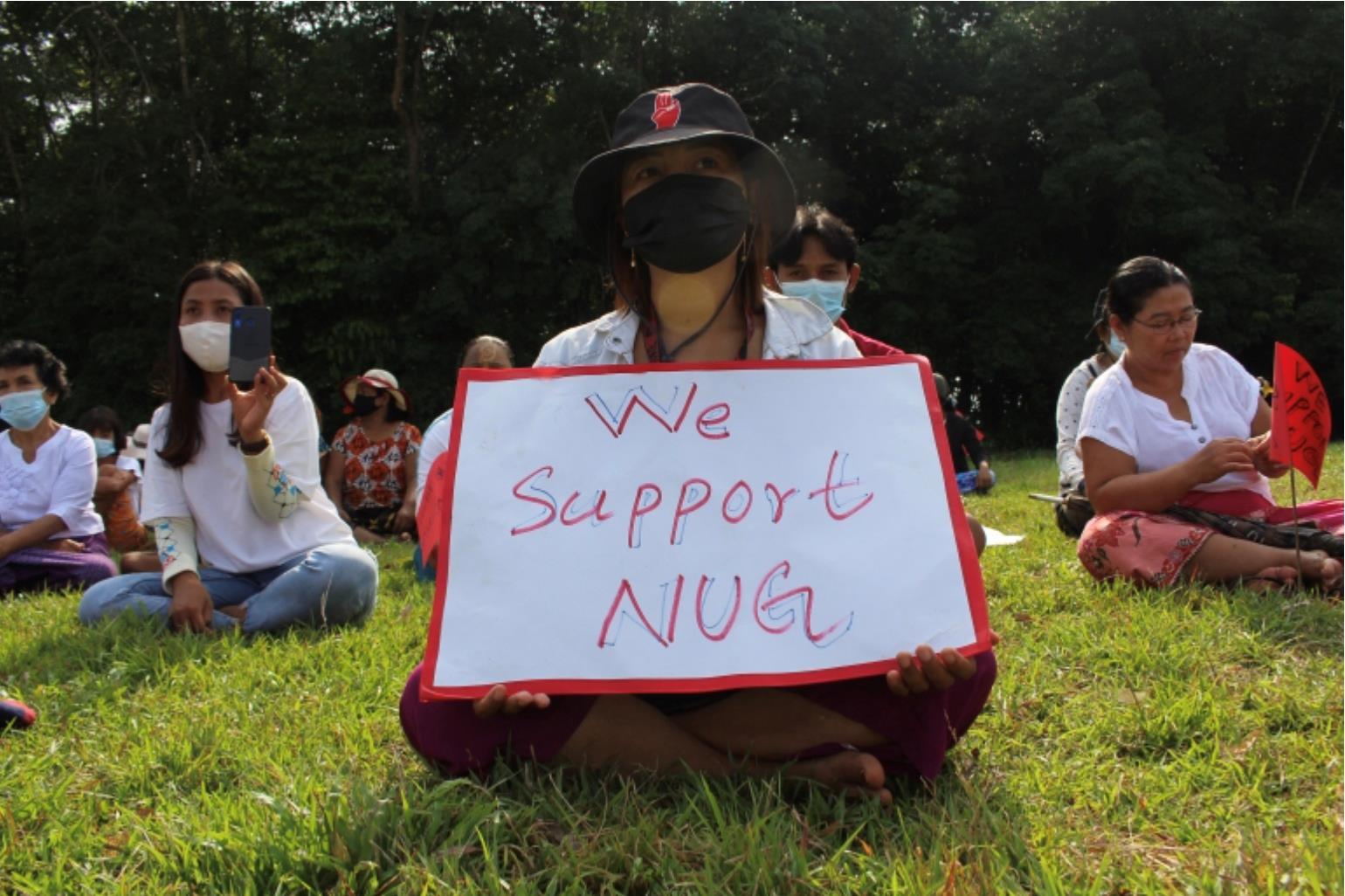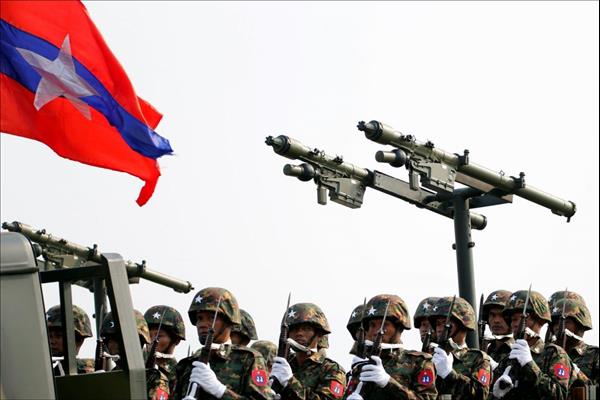(MENAFN- Asia Times) Myanmar's military State Administration Council (SAC) regime has managed to cling to power since its ill-fated February 2021 coup toppled a democratically elected civilian government.
But the SAC has faced unprecedented resistance against its illegitimate power grab, from seasoned insurgents, street protestors, a new National Unity Government (NUG) in exile, and hundreds of Peoples Defense Forces (PDFs) in multiple locations across the country.
The SAC, bloodied but still belligerent, has managed to hold onto what passes for“power” in the country through three main methods: a domestic weapons industry that grants it self-sufficiency in small arms and light weapons; intensified use of foreign-sourced airpower and heavy artillery; and the widespread use of indiscriminate violence that the first two options grant a murderous military.
Many in the international community have called for a United Nations arms embargo to stop the sales of Russian, Chinese and Indian weaponry to the regime. After two years of these calls, it is no closer to becoming a reality, despite Moscow, Beijing, and New Delhi uncharacteristically abstaining from Security Council Resolution 2669, which was relatively critical of the SAC in December (The other 12 members voted in favor of the resolution).
Fewer calls, however, have been made to pressure and penalize Myanmar's domestic arms industry.
A new report,“Fatal Business: Supplying the Myanmar Military's Weapon Production”, released today (January 16), is a comprehensive survey of the supply chains feeding Myanmar's domestic arms industries, especially the manufacture of the small arms and light weapons that have been used to lethal effect to quell dissent and resistance since the coup.
Many of the nearly 3,000 civilians killed, over a million internally displaced and the 30,000 structures torched have largely come from equipment made in Myanmar, churned out from literal factories of death.

A protester shows a bullet during a protest against the military coup and detention of elected government members in Mandalay, Myanmar on March 27, 2021. Stringer / Anadolu Agency via AFP
Produced by the confusingly named Special Advisory Council-Myanmar (SAC-M), comprised of three eminent persons with long history in Myanmar – Yanghee Lee, Chris Sidoti and Marzuki Darusman – the report is a carefully laid out preliminary investigation into the network of Karkweye Pyitse Setyone (KaPaSa), Directorate of Defense Industries, under the total control of the Myanmar military.
Starting in the 1950s, the military has sought self-sufficiency in infantry support weapons and equipment to fight its forever wars against its own people. Any visitor to Naypyidaw's Defense Services Museum would discern the military's nationalistic pride in its domestic manufacturing capacity.
Many of the KaPaSa's main supporters should come as no surprise: China's state-owned NORINCO, Russia, North and South Korea, Singapore, Israel, Ukraine and other major arms suppliers.
Defense scholar Andrew Selth mapped out many of these dynamics 25 years ago, and they steamed on with barely much notice before the coup, with foreign arms sales from China, Russia and India garnering more interest.
The KaPaSa expanded its range of support suppliers following the 1988 coup d'etat, when the German firm Fritz Werner, the original sugar daddy of the Myanmar defense industry, gave way to multiple suppliers and technical expertise, especially for the new MA-series of assault rifles, from Israel and Singapore.
The report details how raw materials, many of which are in abundance in Myanmar, are still imported predominantly from China. Deficiencies in processing and manufacturing, and capacity to tool high-precision armaments and components, continue to bedevil the KaPaSa.
Years of buying Computer Numerical Control (CNC) machines, allegedly from German, French, Israeli and Taiwanese firms, have augmented the capacity to manufacture small arms, light weapons including mortars, heavy caliber artillery (105mm howitzers and 122mm self-propelled howitzers), and missiles and missile launchers, yet the KaPaSa is still not technically proficient beyond these systems.
Nevertheless, this domestic capacity is sufficient to maintain operational tempo against multiple opponents, as two years of internecine conflict has shown. As the new report argues,“(t)he ability to produce weapons in-country remains an important source of pride for Myanmar's armed forces and is considered essential by its members and supporters in light of the perceived threats to the country's unity and stability.”
Of the reportedly 25 KaPaSa, the report helpfully maps out their exact locations, with the majority in Magwe Region, but also Bago, Mandalay, and Naypyidaw and Yangon Regions. These sites straddle key transportation nodes by road, river and rail, and before February 2021 were insulated from long-standing conflict zones. No longer: The Anya Theater of post-coup conflict puts these factories in close proximity to the KaPaSa's mortal enemies.
The report also names foreign firms allegedly selling parts or components to the Myanmar military. They include Israel Military Industries, which licenses the manufacture of STK 50MG machine guns; Indian firm Tonbo Imaging, which sells “ek” thermal imaging sights; China Aerospace Science and Technology Corporation (CASC), which sells technology for manufacturing CH-4 unmanned aerial vehicles (UAVs); Singapore's ST Kinetics; and Ukrainian firms Ukroboronprom and Ukrspecexport.

Myanmar's military buys arms from a host of foreign suppliers. Photo: Facebook
For the import of raw materials, the report suggests the major players are Norinco (iron, aluminum, copper brass), Myanmar New Power Group (aluminum nitrate), and Mottoma Holdings Limited, Suntac Technologies and Singapore's STE Global Trading Pte Ltd.
The report relies heavily on the clandestine research group Justice for Myanmar, which has produced some of the most admirably consistent and detailed leaks from within the military system for several years.
Highly detailed with a mixture of well-established information, new connections and carefully drawn conclusions – not alarmist and presumptive as these types of reports tend to be – the report at key points suggests avenues for further research. To be sure, the report isn't a definitive mapping of the KaPaSas but rather a welcome first stab.
As the SAC-M concludes, the report“merely scratches the surface of a highly complex, multi-layered network of a large number of licensors, material suppliers, manufacturers and distributors – both State-owned and private companies that are domiciled in, or under the jurisdiction of, a large number of States – that feed the KaPaSa factories production.”
The report's details are by no means, excuse the pun, a“smoking gun.” In itself, interdicting supply chains and disrupting production sites is an important endeavor. But it won't be a“knock-out blow” any more than an arms embargo, assuming it ever actually happens, would be. But it could contribute to long-term attrition of military capacity.
Conflict metrics such as body counts, bases captured, prisoners of war, officers killed by sniper fire, equipment and ammunition seized, enhanced anti-aircraft capacity, reducing aviation fuel supplies and expanding operational areas are all important in establishing a bigger picture, but taken in isolation and presented as the singular pathway to a major breakthrough is misleading.
A multi-pronged project of denuding the capacity of the KaPaSa necessarily requires a united front strategy, although the NUG seems deficient in articulating, let alone coordinating, such an effort.
This KaPaSa report partly redeems the standing of the SAC-M, after their misleading September 2022 publication on“Effective Control” by the broad anti-SAC resistance: brazen NUG propaganda with outlandish claims of the military council having“stable control” of only 17% of Myanmar and the“NUG and resistance forces have(ing) effective control over 52% of the territory.”
An irresponsible project that peddled in false hopes to the long-suffering people throughout Myanmar, it was exacerbated by the throngs of no-idea internationals who uncritically endorsed its claims.
And yet despite the mid-2022 triumphant tweeting of imminent“winning” and a Washington DC-based think tank pontificating of an army on its“last legs”, there is still a long way to go in toppling the military.

A supporter of Myanmar's shadow National Unity Government. Image: Dawei Watch / Twitter
The West, in lieu of arming the resistance, could increase pressure on its allies in Taiwan, Ukraine, Israel and Singapore to end all support, either through state-controlled or private company engagement.
Countries could exert political pressure, or assign intelligence capacity, to seriously undermine the supply flows to the KaPaSa complex. Western aid could eschew“INGO-izing” the revolution and find ways to put more teeth into their exposure and interdiction of the KaPaSa defense industries.
This SAC-M report was designed as a clarion call for international action, yet it should be perceived as a rallying cry for reporting and contextualizing the situation, moving from donor-pleasing ornamental analysis to actionable intelligence for the domestic resistance to hit the military's weapons manufacturing capacity.
International pressure has plateaued. Domestic support for the struggle needs to be enhanced to be sustainable. This won't be found in yet another federalism workshop, or the new funding feedbag of“local governance.” It will be the incessant targeting of the military and their support structures, for as long as it takes to bring them to submission.
David Scott Mathieson is an independent analyst working on conflict, humanitarian and human rights issues on Myanmar























Comments
No comment